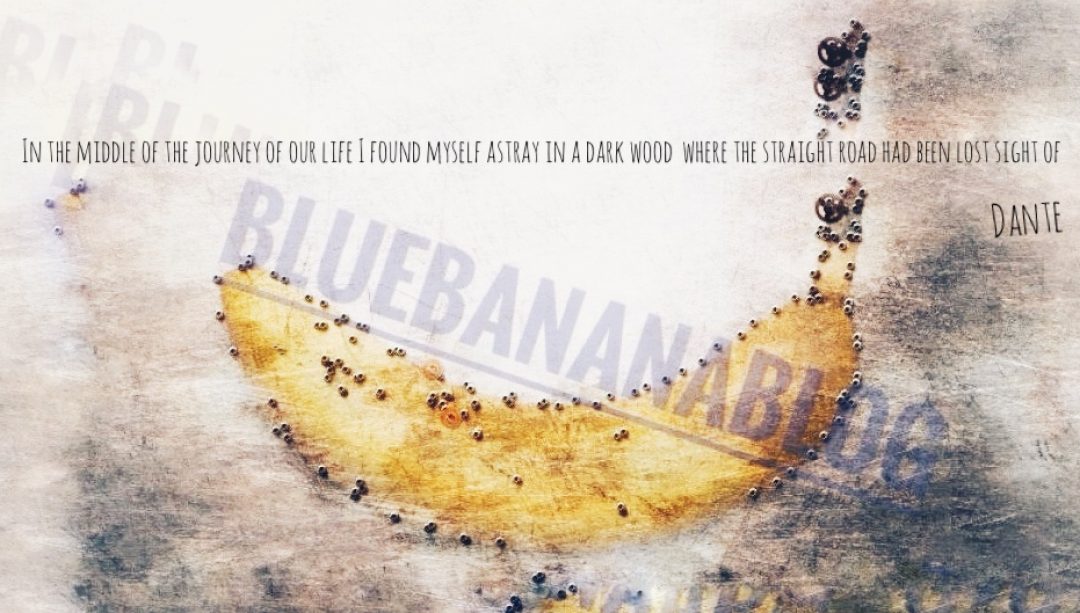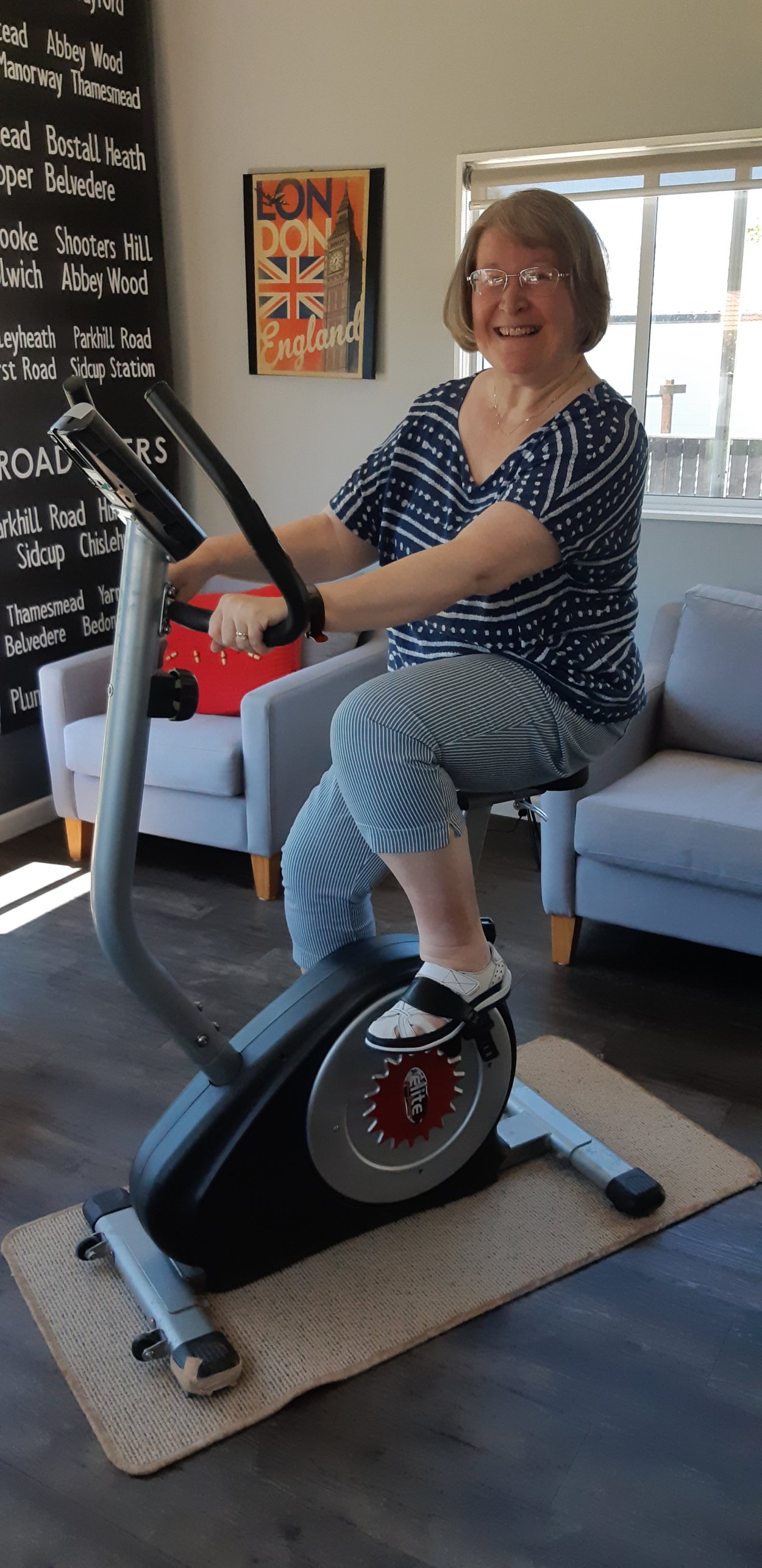Amanda has fallen twice before.
But this time it was different.
I was in the kitchen and she got up from the sofa, stepped forward, turned right, with her weight on her stronger leg, and went to pivot around as she has done hundreds of times before.
I heard a yell and ran in to the lounge to find her face down on a soft chair, at ninety degrees to the sofa. I managed to turn her around and sit her on the floor. But with no feeling and little control of her right side she was a dead weight sitting on the carpet, propped up by the chair behind her.
I needed assistance to get her back up on her feet, so I activated her wrist alarm to call St Johns. An ambulance with 3 paramedics arrived around 20 minutes later.
She had landed on her left knee and they were concerned she may have badly damaged it. They were also concerned, given her history as to why she fell. She certainly wasn’t dizzy, didn’t pass out and felt fine now, apart from a sore knee.
A thorough examination in A & E and a X ray confirmed no breakages, just badly torn ligaments and bruising
Once she got home I helped her to limp back to her chair.
For the next few days I helped her out of the chair each time she needed to stand up, and that’s when I realised something was wrong.
She could no longer walk unaided.
Amanda has been able to walk short distances without holding on to anything for a few years; there are videos on here to show that. At home she uses a combination of holding on either to walls or other objects, to navigate around the house. The only time she walks in ‘free – space’ is when she steps forward from her chair.
And she couldn’t so it. She literally could not put one foot in front of the other in that part of the house, or anywhere else where there was nothing to hold on to. It was as if the skill had just been turned off.
This meant if she was in the house alone and managed to navigate to the sofa (which she could do by holding on around the house), she would be stuck there.
A few months earlier I had asked her doctor if we could arrange a visit from the local hospital physiotherapy team to re-assess Amanda.
Three and a half years post-stroke, although she had come a very long way in her recovery, I thought she was now at a stage some people who had lesser strokes would be at when they were discharged from hospital and there could be new exercises, new physio she could do now which she wasn’t capable of back then. Given her progress my request was given a low priority.
Now we went back to the doctor again and explained the urgency. I was due back at work in a couple of weeks and she could not be left alone if she couldn’t move safely around the house.
Unknown to me, the paramedics had put in an ACC claim which meant Amanda could access private physio immediately.
I made an appointment for her to be assessed at a local rehab and physio clinic.
They noted how she walked, leaning into the wall, using her hand to assist, as if walking down the corridor of a ship rolling in a storm. They suggested, correctly, that her brain may have shifted in her skull during the brain bleed. I checked her notes. It had moved 3mm.
This meant her ‘midline’ was off-centre. Whereas for most of us, the definitiion between our right and left sides runs literally down the centre of our bodies, for Amanda, that midline is off.
So when standing straight, her brain is telling her she is leaning, to the point of tipping off balance. To compensate she leans to the left (where she feels ‘straight’) and hence has to rely on a wall or something else for support.
Likewise she places all her body weight on her left leg as balancing the weight evenly between both legs feels unstable.
When she was re-learning to walk immediately after her stroke, none of this was accounted for, and so over time she has developed a bad habit which was possibly the cause of her fall.
But the biggest issue wasn’t the walking.
She had lost all confidence in her ability to walk solo
Her mobility became more unstable until a few weeks later, as she made her way down the hall to the shower I asked her how she felt this morning?
“scared’.
No one should wake up on Monday morning feeling scared.
She could no longer walk to the bathroom unaided, unable now to navigate the ‘void’ between the bedroom door and the foot of the bed, just an arm’s length away
We went back to the doctor, who prescribed some anti- anxiety medication.
During this time she also stopped taking Voluntastrols. The monthly delivery had stopped during the lock-down and not started up again.
I placed a new order for some.
Fortunately my employer allowed me the flexibility to continue working from home and so I was around to assist her in getting up from the chair during the day
Twice – weekly private physio sessions began helping to iron out the bad habits she had fallen in to; holding on to the dining table when standing up, or resting the back of her leg against a chair, or an arm on a bench top for reassurance.
She was given simple exercises to encourage her to start putting weight on to her weak right side, and a thick rubber mat to balance on barefoot, deliberately designed to feel uneven and soft and so forcing both feet to constantly make micro-adjustments to both balance and posture.
At times the physio had to almost peel her away from the safety of a support post to encourage her to move into the open space of a large room and step over a small object.
As the weeks progressed, and the medication began to take effect, she regained a lot of her confidence.
The rehab team from the hospital arrived a few weeks later and provided a walking frame to assist in moving around the house. Since the fall Amanda doesn’t yet trust herself to rely solely on a walking cane as she would have before.
This frame allowed her to confidently get up from the sofa once more and I was able to return to work knowing that she no longer ran the risk of getting stuck in the chair, or worse, falling again.
A month or so after starting physio, and to encourage a bit more aerobic exercise and increase her stamina, an exercise bike was suggested.
I had tried her with one around a year after her stroke, but she had no proper sensation of sitting on it, or of holding on safely and so gave up before the first attempt had even begun.
Now with added confidence and encouragement she managed to climb on and give it a go.
It was such a success I retrieved our bike from the garage once more and she will now manage a gentle 10 minute peddle a few times each week.

The basic walking frame was replaced with a four-wheeled version, which allows her to walk outside. It also helps in convincing her brain to stand fully upright and put equal weight on both legs when walking.
A few people have said the fall was a blessing in disguise and possibly the culmination of a few years of bad walking habits just getting worse. It also proved my hunch that there was still room for improvement, and the ongoing rehab, with more to come will continue to help, once gain proving that you can continue to improve even several years out from a stroke or brain bleed.


My husband had to relearn to walk after an accident and I also after double hip replacement. We both found aqua therapy good in a proper aqua therapy pool. Unfortunately the government no longer funded the pool in Auckland and it has closed. I would still suggest going to pools you walk in build up muscle with our the fear of falling and hurting yourself. Good luck
LikeLike
Great news!!!
LikeLike